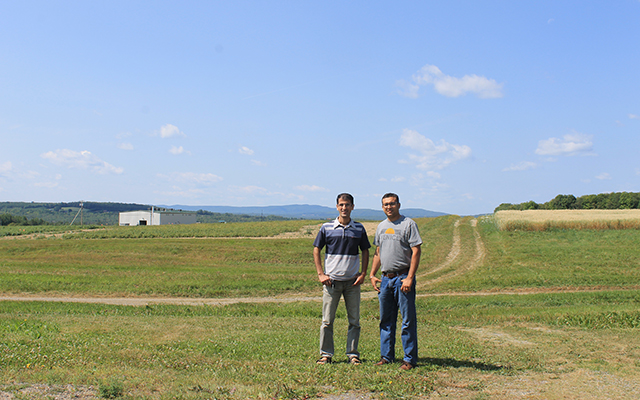
PRESQUE ISLE, Maine — Lakesh Sharma has been working at the University of Maine Cooperative Extension in Presque Isle for more than a year, and he has enough work on his plate for years to come.
Sharma, a soil and crops specialist and native of Punjab, India, is leading several multi-year studies on issues of perennial importance to potato growers and others.
One of those studies is targeted at helping farmers use phosphorus more efficiently. A key crop nutrient, phosphorous has long been a significant source of water pollution, as excess is prone to runoff following harvests.
In the past few decades, phosphorous application rates in potato fields have been increasing nationally, Sharma said.
“We are not able to retain it and we are applying more than required.”
The average application of phosphorous in U.S. potato fields is around 182-190 pounds per acre — much of which is not used by the potato plants, Sharma said.
“Potatoes are not very good phosphorous removers,” Sharma said. “They use between 20 and 25 pounds per acre, so there is a decent amount of leftover. That ultimately comes back to the farmer’s profits, even if you save $1 per acre.”
Over a three-year, ongoing study, Sharma and his team are working with farmers and in experimental fields to understand ways to improve the efficiency of phosphorous applications and, in turn, prevent runoff.
The study will compare different methods of applying phosphorus, Sharma said.
Currently, most farmers apply phosphorous along with other fertilizers as a narrow band in the soil underneath potatoes at the time of planting. Sharma said the studying will test broader applications, as well as multiple, smaller applications throughout the growing season.
“If we can spread out that band a little more, there may be more access to the roots,” Sharma said. “We do not know the answers yet and will be testing all those methods.”
The study also will examine the relationship between nutrients and mycorrhizae, soil fungi that grow in usually symbiotic association with plant roots.
“Mycorrhizae are friendly fungi,” Sharma said. “The mycorrhizae are not absorbing the phosphorous for the plant itself. It’s increasing the surface area for plant roots to absorb more nutrients.”
While native soil mycorrhizae species may suffer from the regular applications of fungicides used to control blight in potatoes, it’s possible that there are fungicide-resistant species, Sharma said. It’s also known that barley, a common rotation crop for potatoes, is a natural accumulator of mycorrhizae, Sharma said. Barely could help restore beneficial mycorrhizae in the soil during the off-year for potatoes.
Sharma’s team will be identifying native mycorrhizal species in soil and comparing them with commercially sold strains, with the goal of finding species that can help potatoes with nutrient efficiency.
In another study, Sharma’s team is tracking the amount of the sulfur in soils and examining ways to replenish the macronutrient.
“Sulfur is as important as nitrogen, phosphorous and potassium,” Sharma said. “All crops need sulfur.”
Sulfur levels have been decreasing in many soils, partly as a result of an otherwise positive outcome — less sulfur pollution in the atmosphere, thanks to improvements in national air quality over the last decade.
“In the past, we were receiving enough sulfur from the air, but now it’s not possible,” Sharma said. He is suggesting that growers large and small consider getting a soil test this summer to measure the sulfur content in their fields.
In subsequent trials, Sharma’s team will compare ways to replenish sulfur, including through use of slow-release, elemental sulfur.
This month, Sharma also is gearing up for the third full-year of the University of Maine Presque Isle’s sustainable agriculture program.
In addition to working at the Cooperative Extension, Sharma teaches classes with the UMPI certificate program.
Another relatively new face also is bringing expertise to that program and the Aroostook Extension offices.
For the first time, the Aroostook County Extension office is hosting a doctoral degree graduate student, Ahmed Zaeen, a Baghdad, Iraq, native, who is working on research and grower support. Zaeen is earning his doctoral degree through the University of Maine Orono but is doing his research through the extension office in Presque Isle and also is working as a teaching assistant at UMPI.
Zaeen, who is completing graduate agricultural studies under an Iraqi national scholarship program, specializes in agricultural applications of GPS and remote-sensing technology. Among other things, he and Sharma are working on a smartphone app for potato growers that can help identify pests and diseases in the field.







